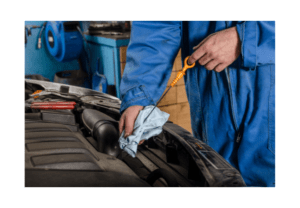Are you looking to make sure your car’s automatic transmission stays in good condition? You’re not alone – after all, the automatic transmission is essential in keeping your car moving and running smoothly. Fortunately, with just a few simple steps, it’s easy to ensure that your transmission is always up-to-date and working properly.
We’ll explore how to maintain an automatic transmission so that you don’t have any problems down the line. We’ll cover everything from flushing the automatic oil pan to checking for worn parts – no matter what kind of transmission maintenance needs to be completed, this guide has got you covered.
Automatic transmissions have become increasingly common in modern cars. They are designed to shift gears automatically, which makes driving much easier and more convenient. However, like any other component in your car, automatic transmissions need regular maintenance to operate efficiently and last longer. Proper maintenance can also help you avoid costly a costly transmission repair and replacements in the future.
Contents
Schedule Regular Maintenance
Regular maintenance of your car’s transmission is essential to keeping your vehicle running smoothly and avoiding costly repairs down the road. The recommended service interval for automatic transmission maintenance can vary depending on the make and model of your vehicle, but generally, it’s recommended to have your transmission fluid and transmission filter changed every 30,000 to 60,000 miles. In addition to fluid and filter changes, other important maintenance tasks include inspecting the transmission for leaks, checking the transmission fluid’s level and condition of the fluid, and adjusting the shift linkage as necessary.
Proper maintenance of your automatic transmission can help to prolong the life of your vehicle and prevent expensive transmission repairs. Neglecting regular maintenance can lead to a host of problems, including decreased fuel efficiency, reduced performance, and even complete transmission failure. Regular maintenance by a transmission specialist also gives you the opportunity to catch any potential problems early on and address them before they become more serious.
To ensure that your automatic transmission is properly maintained, it’s recommended to consult the car owner’s manual or speak with a transmission repair specialist to determine the appropriate service intervals and maintenance tasks for your vehicle.
Check the Transmission Fluid

Checking the transmission fluid level is an important part of maintaining your vehicle’s automatic transmission. The transmission fluid is responsible for lubricating the transmission’s internal components and helping to cool and clean the system. Over time, the fluid can become contaminated or degraded, which can lead to reduced performance and even transmission failure. Be sure to check your transmission fluid level regularly can help to ensure that your car’s transmission is properly lubricated and operating at optimal performance.
To check the transmission fluid level:
- Make sure the vehicle is parked on a level surface with the engine running and the transmission in either “Park” or “Neutral.”
- Locate the transmission dipstick, which is usually located near the back of the engine bay, and pull it out of the transmission.
- Wipe the dipstick clean with a rag or paper towel, then reinsert it into the transmission and pull it out again.
- The fluid level should be between the “Full” and “Add” marks on the dipstick.
- If the fluid level is low, add the appropriate type of transmission fluid to bring it up to the proper level.
If the fluid is dark, burnt, or has a foul odor, it’s recommended to have the fluid and filter changed by a qualified mechanic. Checking the transmission fluid regularly can help to prevent transmission problems and ensure the longevity of your vehicle’s automatic transmission.
Get the Engine Cooling System Serviced
The engine cooling system is a crucial component of your vehicle that helps to regulate the engine’s temperature and prevent overheating. Over time, the system can become clogged with dirt and debris, and the coolant can become contaminated or degraded, leading to reduced performance and even engine damage. Getting your engine cooling system serviced on a regular basis can help to prevent these problems and ensure that your vehicle is running smoothly and efficiently.
The recommended service interval for engine cooling system maintenance can vary depending on the make and model of your vehicle, but generally, it’s recommended to have the coolant and system inspected and serviced every 30,000 to 60,000 miles. This may include flushing the cooling system to remove any dirt or debris, checking the coolant level and condition, inspecting the radiator, hoses, and water pump for leaks or damage, and replacing any worn or damaged components.
Regular maintenance of your engine cooling system can help to prevent overheating, improve fuel efficiency, and extend the life of your engine. To ensure that your engine cooling system is properly maintained, it’s recommended to consult the vehicle owner’s manual or speak with a qualified mechanic to determine the appropriate service intervals and maintenance tasks for your vehicle.
Don’t Change Gears While the Car is Moving
In an automatic transmission vehicle, the transmission is responsible for changing gears automatically, based on the speed and load of the vehicle. As such, it’s not necessary to manually shift gears like in a manual transmission vehicle. In fact, attempting to manually shift gears in an automatic transmission vehicle while the car is in motion can cause damage to the transmission and other components of the drivetrain.
When you shift gears in an automatic transmission vehicle, you’re essentially telling the transmission to change the gear ratio to a different setting. This is done by using the shift lever or buttons on the steering wheel to select the desired gear. However, if you try to manually shift gears while the car is in motion, it can cause the transmission to shift abruptly, which can cause damage to the transmission and potentially lead to a loss of control of the vehicle.
To avoid this, it’s important to let the transmission do its job and allow it to shift gears automatically as needed, without any manual intervention. By following this simple rule, you can help to ensure the proper functioning and longevity of your vehicle’s transmission.
In addition to regular transmission maintenance, there are a few things you can do to prevent problems with your transmission. Here are a few preventative maintenance tips:
- Use the correct type of transmission fluid. Check your car owner’s manual for the recommended type of fluid.
- Avoid towing heavy loads if possible. Towing puts a lot of stress on the transmission.
- Don’t rev the engine while the car is in neutral. This can cause unnecessary wear and tear on the transmission.
- Avoid abrupt acceleration and sudden stops. These can put a lot of stress on the transmission.
Following these tips can help you keep your car’s transmission running smoothly for years to come.
Preventative maintenance of your vehicle’s transmission is crucial for ensuring that your vehicle operates smoothly and efficiently. Regular maintenance can help to prevent transmission problems and extend the lifespan of your vehicle. Some key preventative maintenance tasks for an automatic transmission include checking the transmission fluid level and quality, inspecting the transmission for leaks or damage, and servicing the transmission at regular intervals.
Checking the transmission fluid level and quality is an essential part of automatic transmission maintenance. Over time, the fluid can become contaminated or degraded, which can lead to reduced performance and even transmission failure. Regularly checking the fluid level and quality can help to ensure that the transmission is properly lubricated and operating at optimal performance.
Additionally, inspecting the transmission for transmission fluid leaks or damage can help to identify potential problems early on, before they become more serious and expensive to repair. Finally, servicing the transmission at regular intervals, which typically involves changing the transmission fluid and filter, and having the transmission flushed, can help to prevent problems and extend the life of the transmission. By following these preventative maintenance tasks, you can help to ensure that your car’s transmission operates smoothly and reliably for years to come.
Conclusion
An automatic transmission is an important component of your car, and it is important to maintain it properly. Regular maintenance, checking the transmission fluid, servicing the engine cooling system, not changing gears while the car is moving, avoid towing heavy loads, and preventative maintenance can all help extend the life of your automatic transmission. If you are unsure about any of these maintenance tasks, consult your owner’s manual or take your car to a professional mechanic. With proper maintenance, your vehicle’s transmission can provide you with a smooth and reliable driving experience.

3 thoughts on “How to Maintain An Automatic Transmission – Top 5 Maintenance Tips”
Comments are closed.